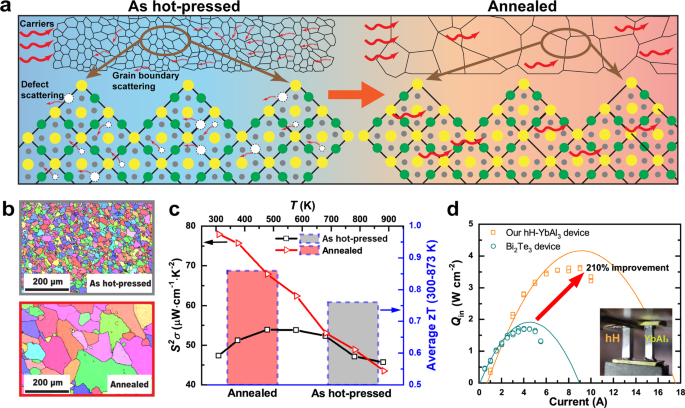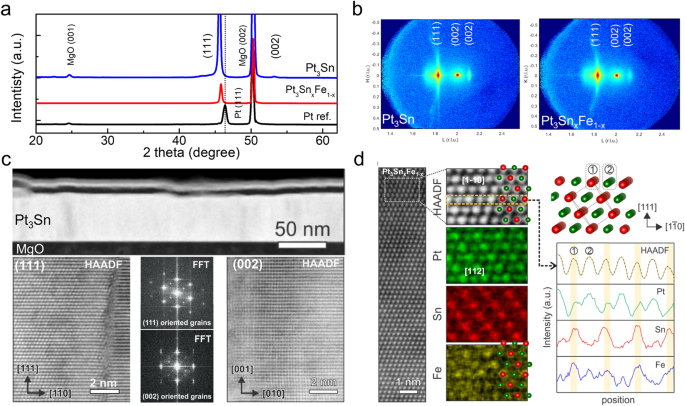2023-07-13 ペンシルベニア州立大学(PennState)
◆新しいデバイスは、特別な特性を持つ材料を使用し、特殊な加熱冷却過程を経て作られました。これにより、欠陥が取り除かれ、材料の電気および熱伝導性が向上しました。研究者たちは、この技術が小型化され、高出力で動作するマイクロエレクトロニクスにおける熱管理の課題に対処する可能性があると述べています。
<関連情報>
- https://www.psu.edu/news/research/story/new-high-power-thermoelectric-device-may-provide-cooling-next-gen-electronics/
- https://www.nature.com/articles/s41467-023-38446-0
ハーフホイスラー合金が新たな高出力密度熱電冷却材料になる Half-Heusler alloys as emerging high power density thermoelectric cooling materials
Hangtian Zhu,Wenjie Li,Amin Nozariasbmarz,Na Liu,Yu Zhang,Shashank Priya & Bed Poudel
Nature Communications Published:06 June 2023
DOI:https://doi.org/10.1038/s41467-023-38446-0

Abstract
To achieve optimal thermoelectric performance, it is crucial to manipulate the scattering processes within materials to decouple the transport of phonons and electrons. In half-Heusler (hH) compounds, selective defect reduction can significantly improve performance due to the weak electron-acoustic phonon interaction. This study utilized Sb-pressure controlled annealing process to modulate the microstructure and point defects of Nb0.55Ta0.40Ti0.05FeSb compound, resulting in a 100% increase in carrier mobility and a maximum power factor of 78 µW cm−1 K−2, approaching the theoretical prediction for NbFeSb single crystal. This approach yielded the highest average zT of ~0.86 among hH in the temperature range of 300-873 K. The use of this material led to a 210% enhancement in cooling power density compared to Bi2Te3-based devices and a conversion efficiency of 12%. These results demonstrate a promising strategy for optimizing hH materials for near-room-temperature thermoelectric applications.



